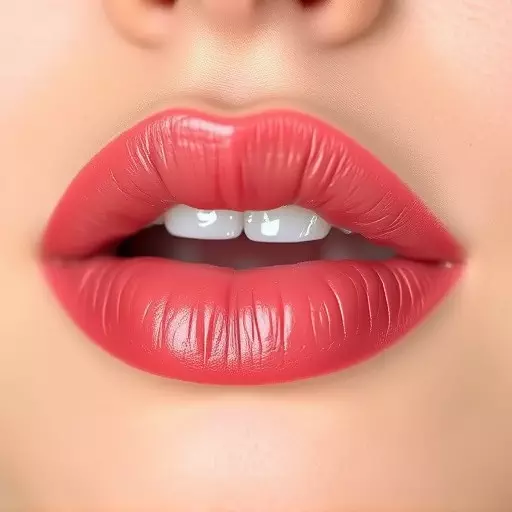Lip pigment fading is a dynamic interplay between art and science, influenced by factors like pigment quality, skin type, lifestyle, and environment. Techniques like Toledo's lip blush (lip micropigmentation), ombre lip tinting, and other micropigmentation methods introduce color into the skin's upper layers but experience gradual fading over time. Understanding this process is crucial for cosmetic artists and individuals seeking long-lasting results. Deep deposits, specific skincare routines, high-quality products, and regular touch-ups can maximize vibrancy and duration of lip art, with innovative techniques like advanced micropigmentation promising longer-lasting color.
“Uncover the enigmatic process of pigment fading, a common concern among those embracing lip blush techniques in Toledo. This comprehensive guide explores the science behind color deterioration in lip pigments and how it affects popular trends like ombre lip tinting and lip micropigmentation. From understanding the fading factors to caring for your vibrant hues, we delve into strategies to prolong the intensity of your lip art. Discover future innovations that could revolutionize lasting results.”
- Understanding Lip Pigment Fading: A Comprehensive Overview
- The Science Behind Color Deterioration in Lip Pigments
- Factors Influencing the Fading Process of Lip Blush and Tint
- Lip Micropigmentation: Longevity vs. Fading Considerations
- Ombre Lip Tinting: Techniques to Prolong Color Intensity
- Tips for Minimizing Pigment Fading: Care and Maintenance Strategies
- Future Trends in Lip Pigmentation: Innovations for Lasting Results
Understanding Lip Pigment Fading: A Comprehensive Overview

Lip pigment fading is a fascinating process that combines art and science. It involves the gradual loss of color from lip pigments, including popular techniques like lip blush in Toledo, ombre lip tinting, and lip micropigmentation. These methods deposit color into the upper layers of the skin, but over time, the body’s natural processes break down and reabsorb these pigments, leading to fading.
Understanding this fading process is crucial for anyone considering these cosmetic procedures. The rate of fading can vary based on factors like pigment quality, skin type, lifestyle choices, and even environmental conditions. Recognizing that lip micropigmentation isn’t a permanent solution empowers individuals to make informed decisions about maintaining their desired lip aesthetic.
The Science Behind Color Deterioration in Lip Pigments

The science behind color deterioration in lip pigments is a fascinating aspect of cosmetic formulation and dermatology. Lip blush techniques, like Toledo’s renowned lip micropigmentation, involve implanting tiny particles of pigment into the upper layers of the skin to create a lasting stain. Over time, these pigments experience fading due to several factors. One key reason is enzymatic degradation; our bodies produce enzymes that can break down and disperse the foreign substances present in cosmetic pigments. Additionally, as the skin naturally renews itself, the layer containing the implanted pigments sloughs off, leading to a gradual loss of color.
The ombre lip tint effect, for instance, relies on precise application and pigment distribution to achieve a gradient of shades. However, this intricate design is susceptible to fading unevenly, with certain areas losing their vibrancy faster than others. Environmental factors also play a significant role; exposure to sunlight and oxygen can accelerate the degradation process, causing pigments to lose their richness and brightness. Understanding these mechanisms is crucial for cosmetic artists using lip micropigmentation techniques, as it helps them select pigments that are more resistant to fading, thus ensuring longer-lasting results for clients.
Factors Influencing the Fading Process of Lip Blush and Tint

The fading process of lip blush and tint is influenced by a multitude of factors. One key aspect is the lip micropigmentation technique used, with different methods offering varying levels of durability. For instance, the depth and density of pigment placement can significantly impact fade rates—deeper deposits tend to last longer. Additionally, skin type plays a role; oilier skins may experience faster fading due to increased product movement, while drier skins might retain color longer.
Other considerations include environmental factors like sunlight exposure and humidity levels, which can accelerate the breakdown of pigments. Furthermore, lip blush and tint products themselves vary in quality and composition, with high-quality, long-lasting formulas offering better resistance to fading. The ombre lip tint technique, characterized by gradient shading, may also exhibit different fade patterns compared to solid color applications, requiring touch-ups more frequently over time.
Lip Micropigmentation: Longevity vs. Fading Considerations

Lip Micropigmentation is a popular choice for those seeking semi-permanent enhancements, especially with the art of lip blush technique Toledo has become renowned for. This process involves inserting tiny pigment particles into the upper layers of the skin to create a subtle and natural-looking color. The advantage lies in its longevity—it can last up to several years—making it a convenient option for individuals who want to save time on daily makeup routines. However, as with any cosmetic procedure, fading is an inevitable concern.
The ombre lip tint effect, achieved through lip micropigmentation, may fade over time due to various factors such as skin turnover, exposure to UV rays, and lifestyle choices. To prolong the vibrancy of the pigment, practitioners recommend maintaining proper skin care routines and avoiding certain products that can accelerate fading. Regular touch-ups are often necessary to maintain the desired intensity of the lip color, ensuring clients enjoy their enhanced features for an extended period without compromising on the overall aesthetic.
Ombre Lip Tinting: Techniques to Prolong Color Intensity

Ombre Lip Tinting is a cutting-edge lip micropigmentation technique that revolutionizes the way we think about lasting color. Unlike traditional lip blush methods, this approach employs a subtle gradient effect, creating a natural-looking fade from a deeper shade at the center to a lighter, more sheer tone at the peripheries. This ombre lip tint not only enhances the visual appeal but also prolongs the intensity of the pigment, ensuring your vibrant shades stay put for longer periods.
By mastering specific application techniques, professionals can tailor the ombre effect to suit various client preferences and face shapes. Precise blending and strategic placement of pigments are key to achieving a flawless finish. This innovative lip blush technique in Toledo is gaining popularity among those seeking high-impact colors that fade gracefully over time.
Tips for Minimizing Pigment Fading: Care and Maintenance Strategies

To minimize pigment fading and prolong the vibrancy of your lip art, whether it’s a delicate lip blush technique Toledo, ombre lip tint, or lip micropigmentation, consistent care and maintenance are essential. Regularly moisturize your lips to prevent dryness, which can accelerate color loss. Use a hydrating lip balm with SPF protection to shield against environmental damage caused by UV rays. Avoid aggressive lip scrubs or peeling products that may irritate the sensitive skin and cause discoloration. Instead, gently exfoliate once weekly using a sugar-based scrub to remove dead skin cells without damaging the pigment.
Proper storage is another critical factor. Keep your lip tint or micropigmentation tools clean and store them in a cool, dry place away from direct sunlight. When not in use, consider using air-tight containers or protective cases to shield against fading influences from heat and moisture. Additionally, be mindful of the products you apply around your lips; avoid using harsh cosmetics or skincare items that may contain ingredients that interact negatively with the pigmented color.
Future Trends in Lip Pigmentation: Innovations for Lasting Results

The future of lip pigmentation is bright, with a growing trend towards innovative techniques that offer lasting results. One such method gaining traction is lip micropigmentation, which involves fine needle penetration to deposit pigments into the upper layers of the lips, creating a subtle yet defined look. This advanced technique promises longer-lasting color compared to traditional lip blush or ombre lip tint methods.
Additionally, hybrid approaches combining permanent makeup with modern ingredients are emerging. Researchers and artists are exploring new pigment formulations that enhance fading resistance, ensuring clients enjoy their enhanced lip colors for extended periods. The lip blush technique from Toledo, Ohio, is a prime example of this evolution, where advanced tools and precise application techniques deliver natural-looking results that defy the test of time.


